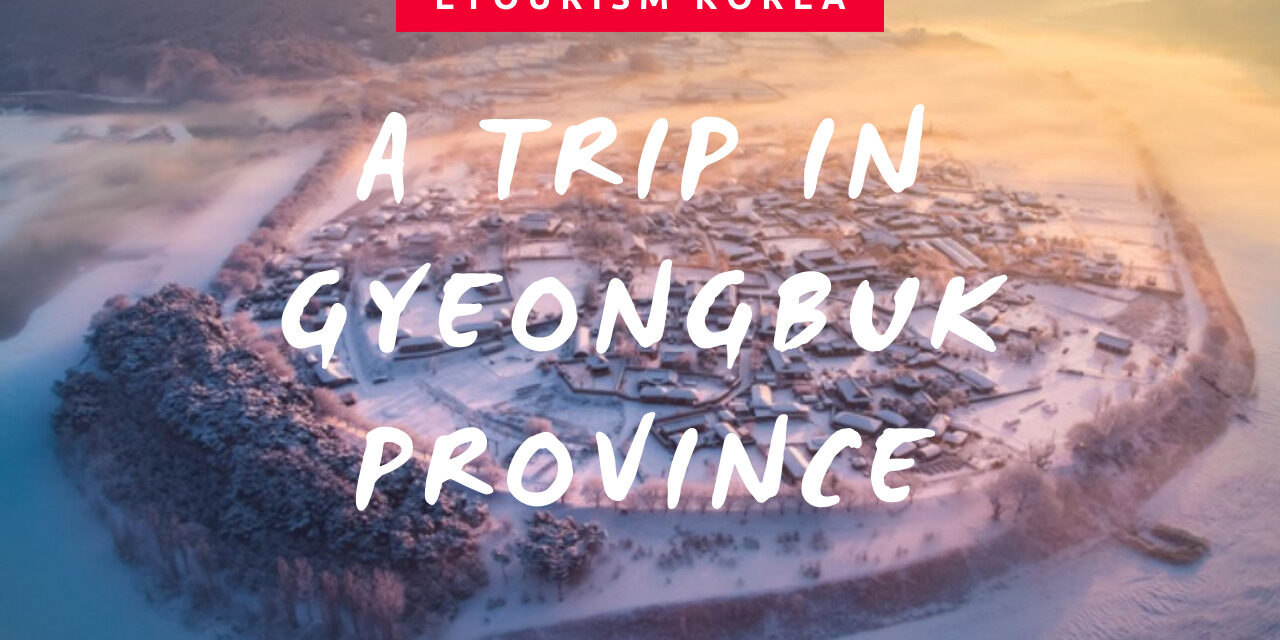A trip in Gyeongbuk Province
The province of Gyeongbuk is full of history. Gyeongju, one of its cities, became one of the most famous and visited cities of South Korea thanks to its numerous National Treasures. Here are some of them.
How to get there :
Here is situated the Gyeongsangbuk Province (North Gyeongsang Province)
You can get there by KTX train, bus, car or airplane+bus or train
Some main cities : Daegu, Gyeongju, Andong, Yeongju
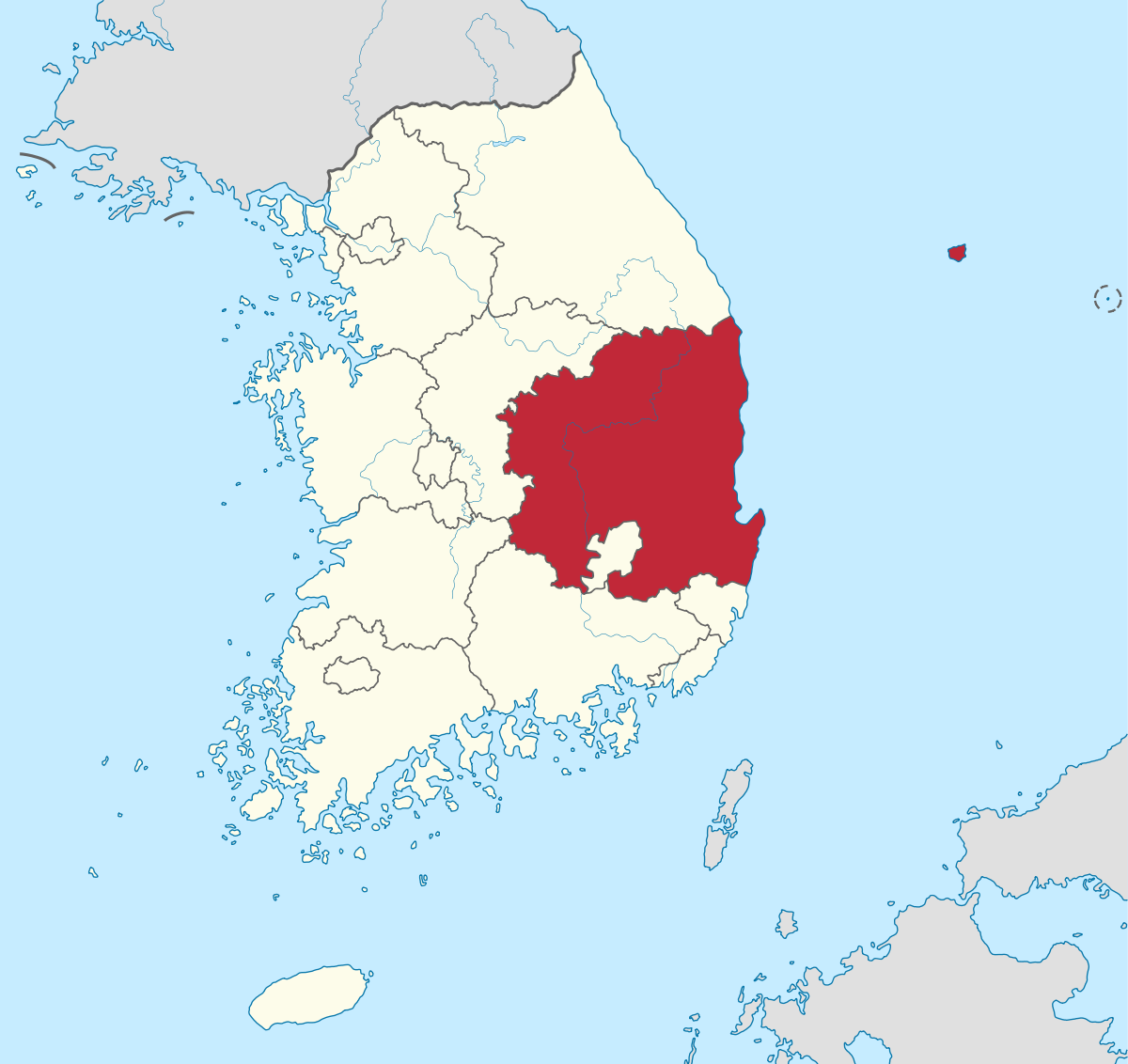
A bit of History
UNESCO Heritage Sites : Temples
Bongjeongsa Temple
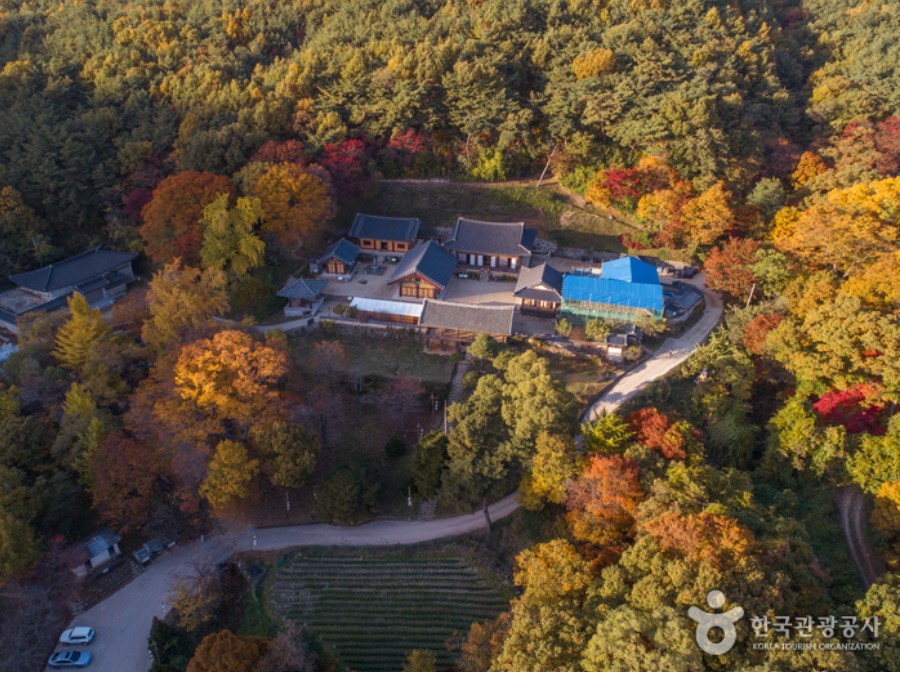
Location : 222, Bongjeongsa-gil, Andong-si, Gyeongsangbuk-do
How to get there :
1h 30min from Daegu by car
2h 53min from Seoul by car
Buseoksa Temple
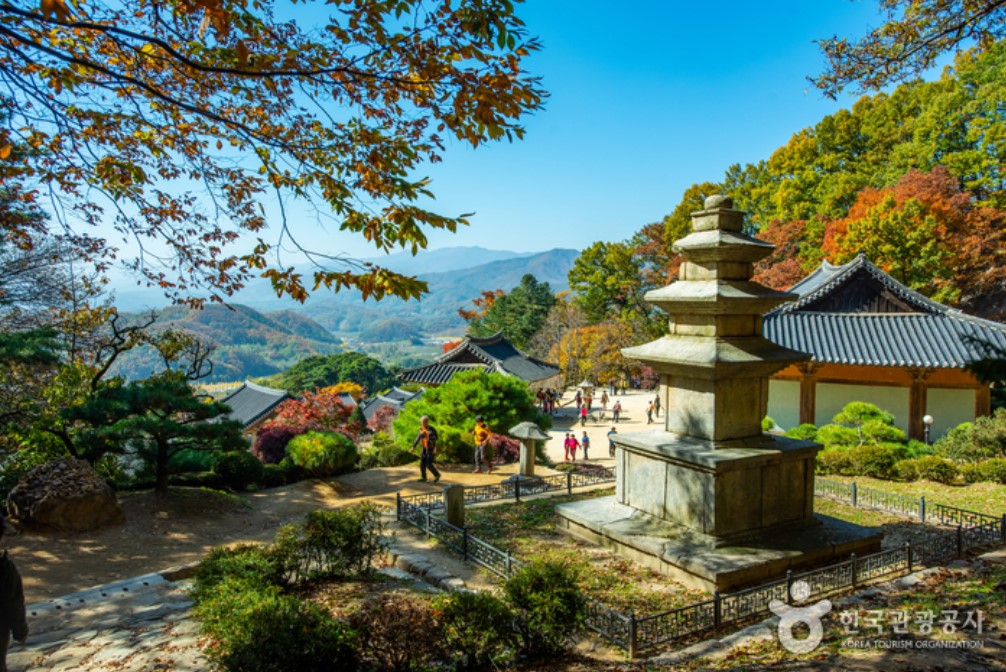
Location : 345, Buseoksa-ro, Yeongju-si, Gyeongsangbuk-do
How to get there :
2h 17min from Daegu by car
2h 52min from Seoul by car
Bulguksa Temple and Seokguram Grotto
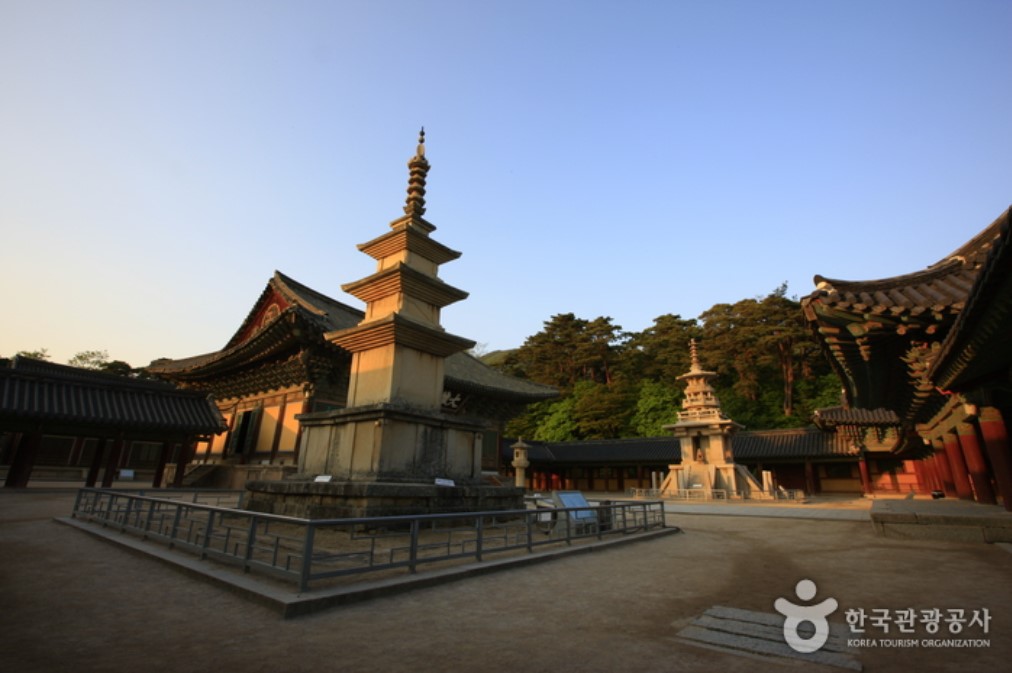
Location : 385 for the Temple / 873-243 for the Grotto
Bulguk-ro, Gyeongju-si, Gyeongsangbuk-do
How to get there :
Temple : 1h 18min from Daegu by car
4h from Seoul by car
Grotto : 1h 32min from Daegu by car
4h 14min from Seoul by car
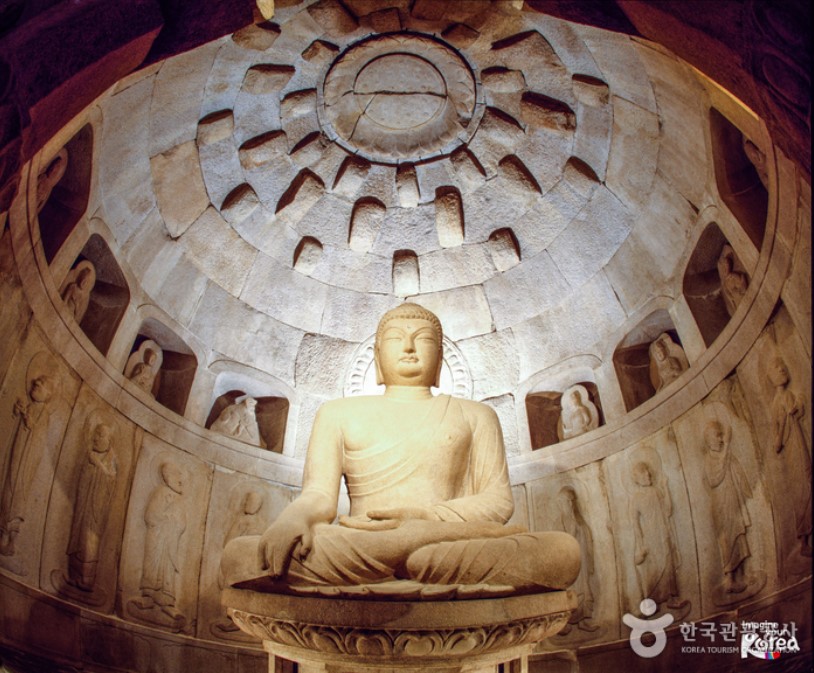
These temples have been designated as National Treasures and even as UNESCO World Heritage Sites for the Bulguksa Temple and the Seokguram Grotto in 1995.
Located on a mid-slope west of Tohamsan Mountain, the Bulguksa Temple is recognized as a monumental workpiece of art displaying deep Buddhist philosophy as well as the spirit of genius artists.
The Seokguram Grotto was built with white granite stone on the mid-slope of Tohamsan Mountain. The main Buddha placed inside the grotto is surrounded by a wall inscribed with 39 images including those of bodhisattvas, disciples, guardian deities, and Heavenly Kings.
Yeongju Huibangsa Temple & Huibang Falls
Location : 278, Jungnyeong-ro 1720beon-gil, Yeongju-si, Gyeongsangbuk-do
How to get there :
From Daegu : 1h 58min by car
From Busan : 3h 18min by car
4h 28min by public transports
From Seoul : 3h 15min by car
Four kilometers northeast of Huibang Station is Huibangsa Temple, which is located at the foot of Sobaeksan Mountain. The temple was built by the Great Monk Duwun in the 12th year (643) of Queen Seondeok’s reign during the Silla Kingdom. Near the entrance of the temple is a natural forest that creates beautiful shadows when the sunlight hits the trees. Also near the temple, one can find Huibang Falls (28m), which is the largest waterfall in the central inland region of Korea.
Huibang Falls waterfall is located at the foot of the Sobaeksan Mountain. The waterfall is on the way to Yeonhwabong Peak (1,383 m in height) of Sobaeksan Mountain, and it is the largest water fall in the central inland region of Korea.
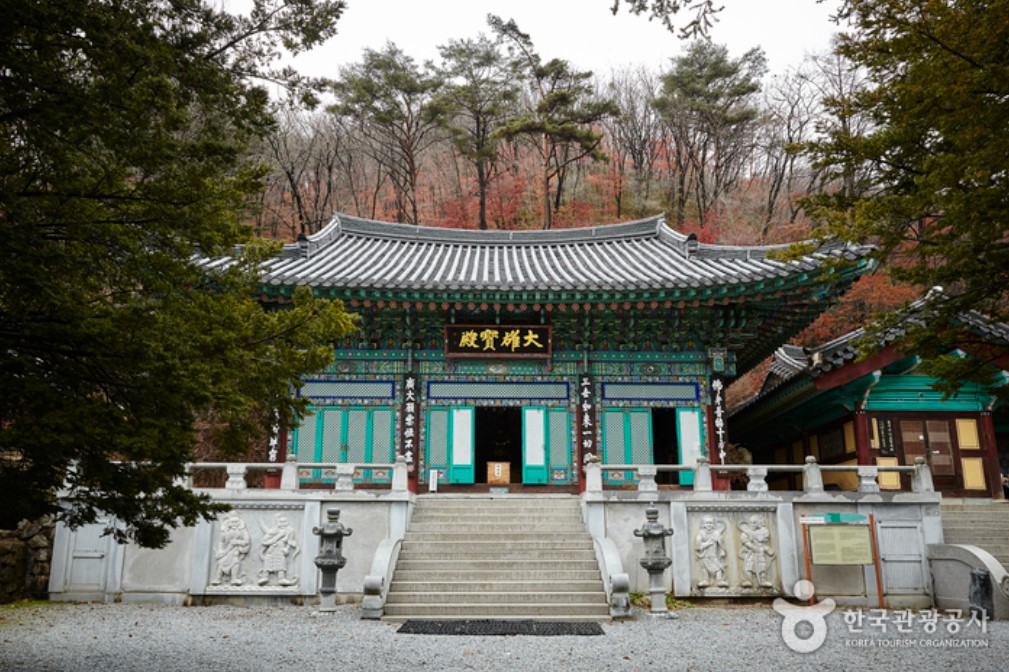
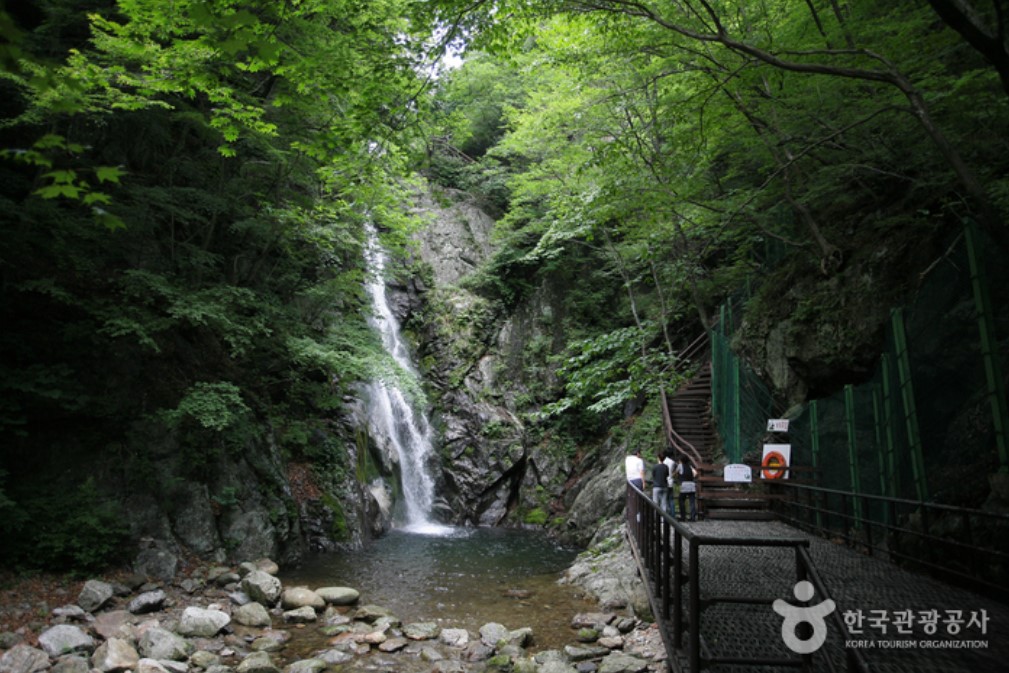
Chilgok Patriots & Peace Memorial
Location : 1580, Gangbyeon-daero, Chilgok-gun, Gyeongsangbuk-do
How to get there :
From Daegu : 47min by car
1h 27min by bus
From Busan : 2h 12min by car
2h 28min by public transports
From Seoul : 3h 32min by car
2h 39min by public transports
Chilgok Patriots & Peace Memorial is a memorial museum dedicated to the soldiers who seized victory by holding up a fierce battle at Nakdonggang River’s line of defense for 55 days in Chilgok during the Korean War. The museum consists of a spacious four-story high building with two basement floors and an outdoor exhibition with a variety of artifacts.
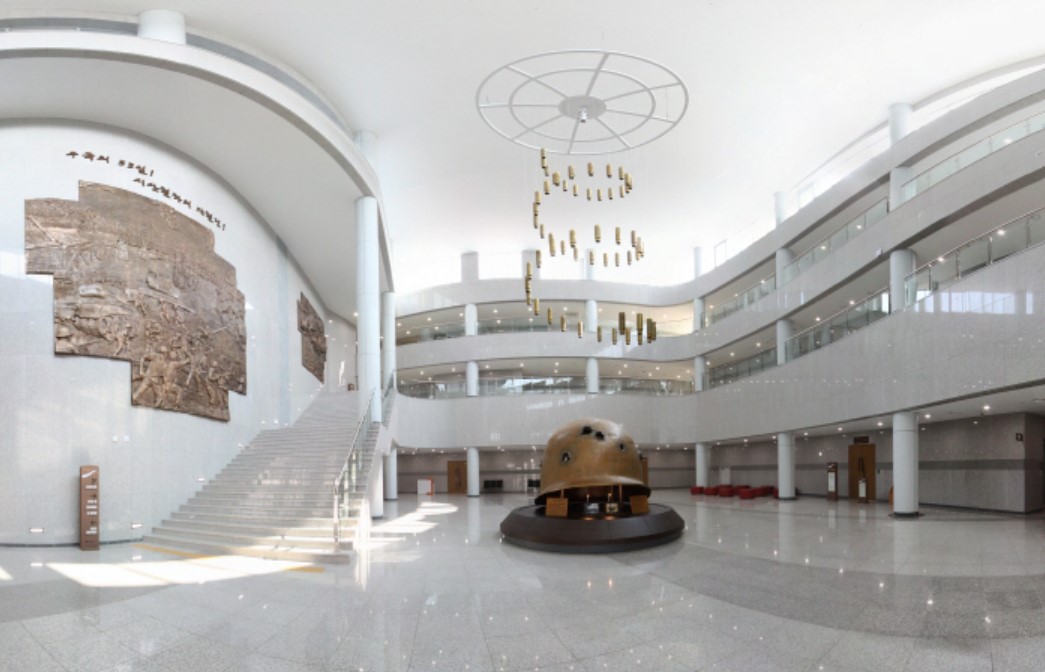
UNESCO Heritage Sites : Folk Villages
Andong Hahoe Folk Village
Location : 2-1, Hahoejongga-gil, Andong-si, Gyeongsangbuk-do
Hahoe Village is one of the most famous folk villages in Korea. Surrounded by the Nakdonggang River, the village is home to descendants of the Ryu clan of Pungsan, which still makes up 70 percent of the villagers.
When Queen Elizabeth II visited Korea in 1999, she complimented the village of Hahoe as the “most Korean place in Korea.”
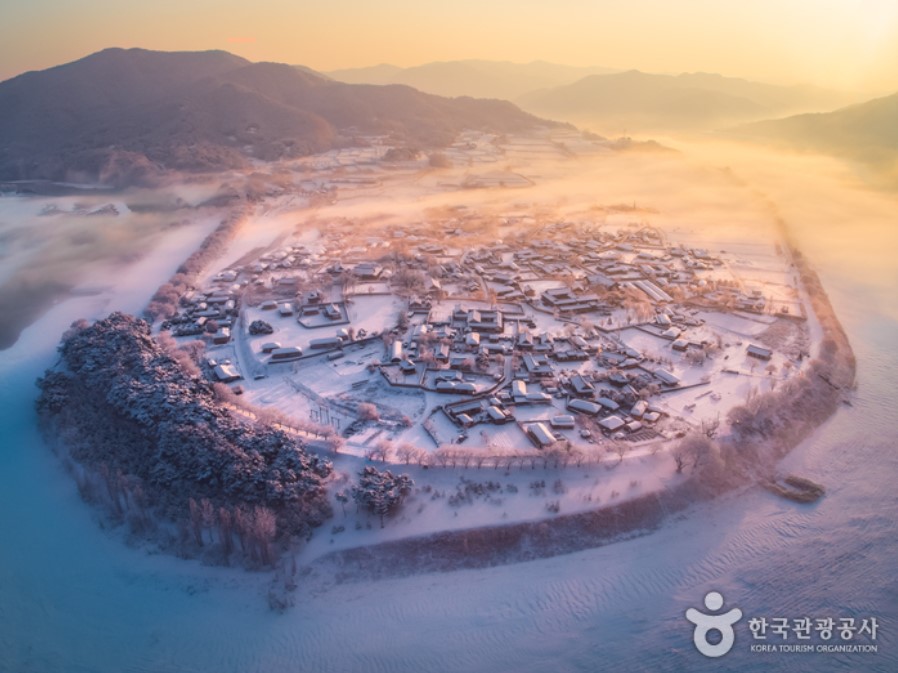
Gyeongju Yangdong Village
Location : 93, Yangdongmaeul-gil, Gyeongju-si, Gyeongsangbuk-do
Gyeongju Yangdong Village is Korea’s largest traditional village, showcasing the traditional culture of the Joseon Dynasty and the beautiful natural surroundings. Thanks to its many cultural heritages, including treasures, national treasures, and folklore materials, the entire village has been designated as a cultural heritage site.
In 1992, Prince Charles of Britain visited the village of Yangdong during his trip to Korea to get a glimpse of a place where the traditional Korean landscape has been preserved.
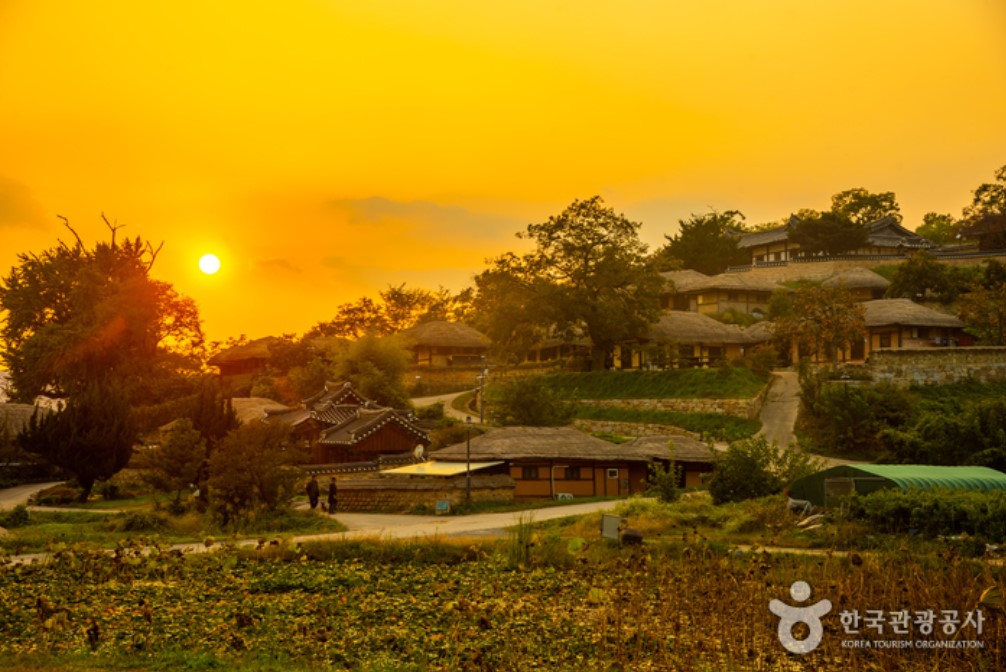
Gyeongju Gyochon Traditional Village
Location : 39-2, Gyochon-gil, Gyeongju-si, Gyeongsangbuk-do
How to get there :
From Daegu : 1h 07min by car
1h 25min by public transports
From Busan : 1h 25min by car
1h 37min by public transports
From Seoul : 4h 05min by car
2h 55min by public transports
At Gyeongju Gyochon Village, visitors can see the House of the Gyeongju Choi Clan (Important Folklore Material No. 27) and try some Gyeongju Gyodong Beopju Liquor (Important Intangible Cultural Asset No. 86-3). The village centers around the Gyeongju Choi Clan, a family known to have maintained their wealth for over 12 generations, producing many important people. Visitors can learn about the lifestyle and spending habits that enabled the family to do this. The village is also home to the site of Yoseokgung, the house of Silla Princess Yoseok.
Nearby attractions include Gyerim Forest, Naemulwangneung Royal Tomb, and Gyeongjuhyanggyo Local Confucian School.
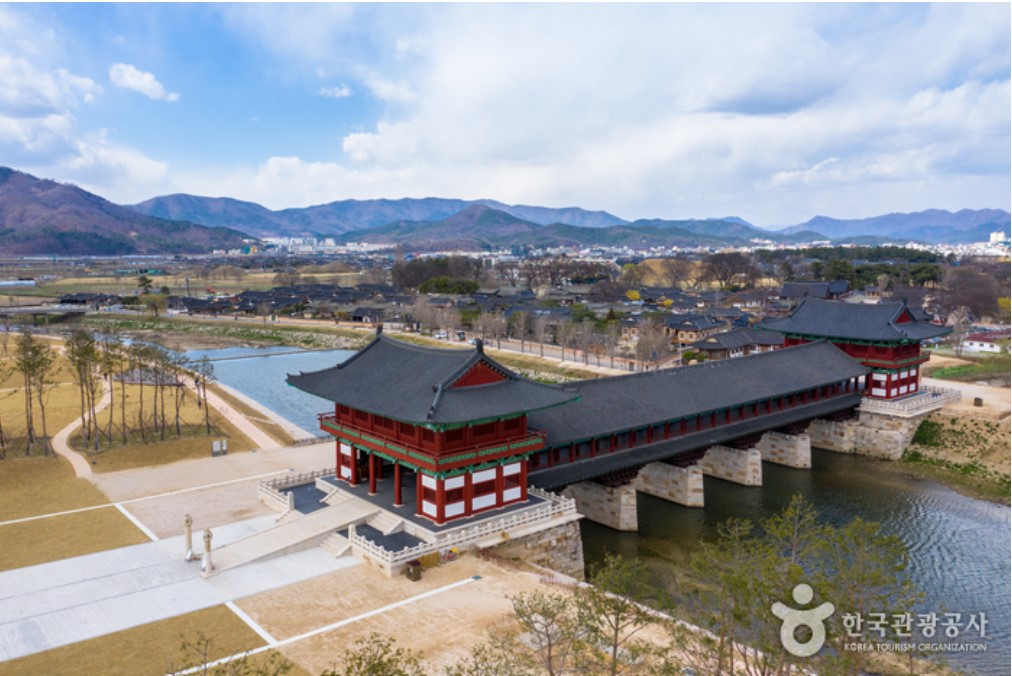
UNESCO Heritage Sites : Confucian Academy Schools
Byeongsan Seowon, Oksan Seowon, Dosan Seowon and Sosu Seowon
Byeongsan Seowon
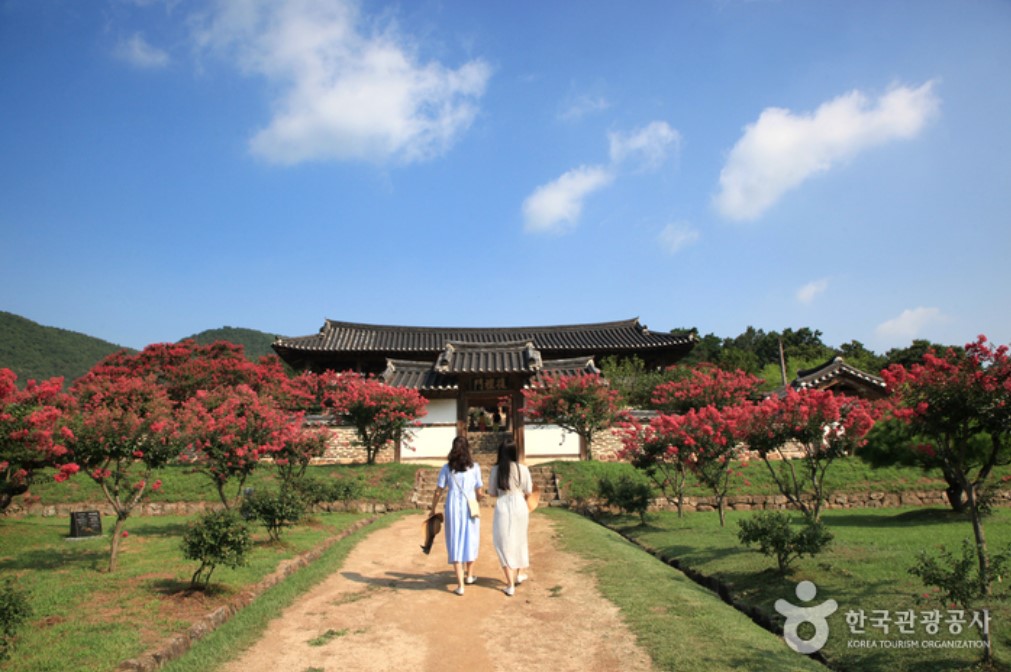
Location : 386, Byeongsan-gil, Andong-si, Gyeongsangbuk-do
How to get there :
1h 37min from Daegu by car
3h 02min from Seoul by car
Before it became a Confucian academy, Byeongsanseowon Confucian Academy was originally located in Pungsang-hyeon under the name Pungakseodang School, which was used as a educational institution since the Goryeo dynasty by a political party known as the Sarim Party. It was moved to its current location in Byeongsan by a well-respected Confucian scholar named Yu Seong-nyong, in 1572.
Doksan Seowon
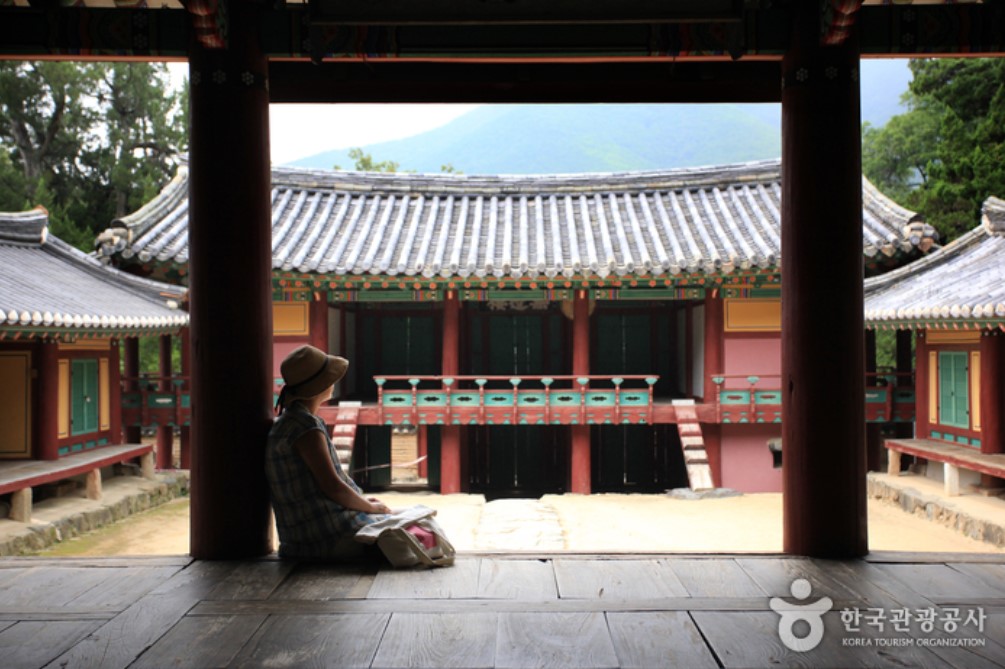
Location : 216-27, Oksanseowon-gil, Gyeongju-si, Gyeongsangbuk-do
How to get there :
1h 15min from Daegu by car
3h 43min from Seoul by car
Oksanseowon Confucian Academy was built to commemorate the academic achievements and virtues of Confucian scholar Yi Eon-jeok (1491-1553). It was founded in 1572, in the fifth year of King Seonjo’s reign, and received its current name the following year.
Oksan Seowon
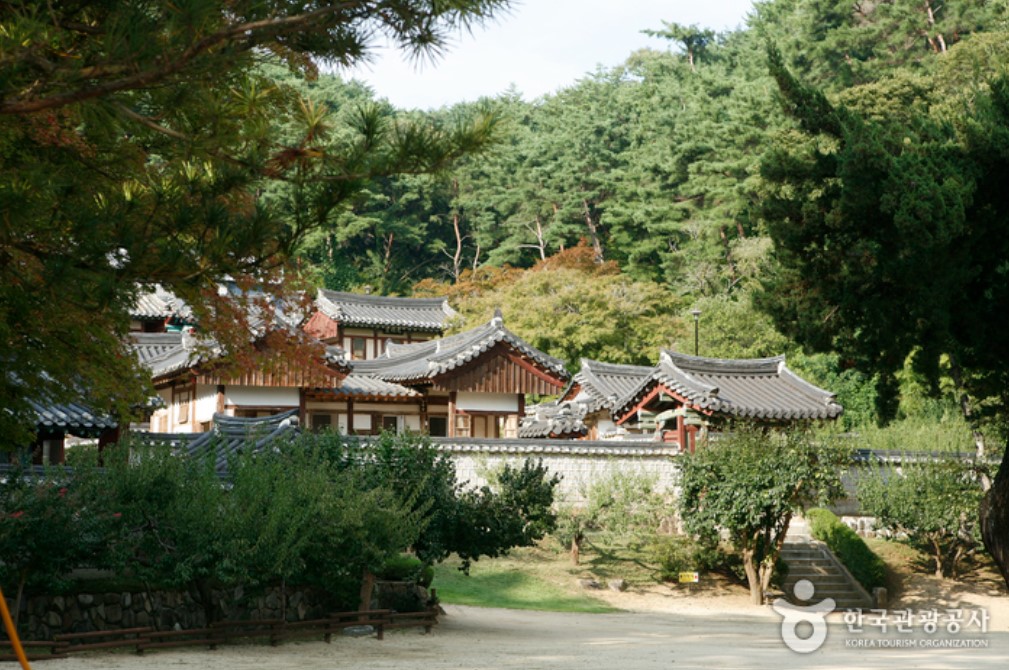
Location : 154, Dosanseowon-gil, Andong-si, Gyeongsangbuk-do
How to get there :
1h 55min from Daegu by car
3h 04min from Seoul by car
In terms of architecture, Dosanseowon Confucian Academy complex can largely be divided into Dosanseodang compound and Dosanseowon compound. Dosanseodang area consists of living quarters and lecture halls where Toegye Yi Hwang, an eminent Confucian scholar, lived and taught his students.
Sosu Seowon
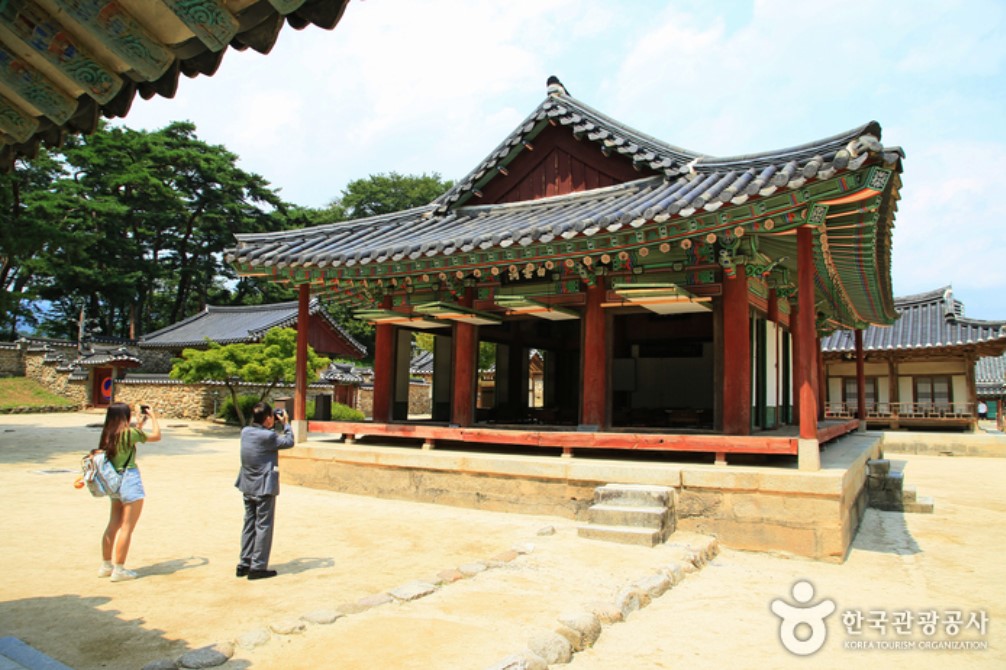
Location : 2740, Sobaek-ro, Yeongju-si, Gyeongsangbuk-do
How to get there :
1h 47min from Daegu by car
2h 26min from Seoul by car
Sosuseowon Confucian Academy is situated at the foothills of Sobaeksan Mountain. Sosuseowon was the first to receive a royal charter as a private Confucian academy along with financial support and acknowledgement by the king.
Natural settings
Hupo Beach
Location : Samyul-ri, Uljin-gun, Gyeongsangbuk-do
How to get there :
From Daegu : 2h 10min by car
2h 32min by public transports
From Busan : 2h 48min by car
From Seoul : 3h 55min by car
The 250-meter-long Hupo Beach is situated right by Hupohang Port. The combination of an expansive sandy beach and indigo blue waters of the East Sea creates a splendid view.
On the hill north of Hupo Beach stands Hupo Lighthouse where one can get an unobstructed view of the East Sea and the Uljin area. Hupo Beach is one of the few beaches offering a splendid view of both the port and the lighthouse.
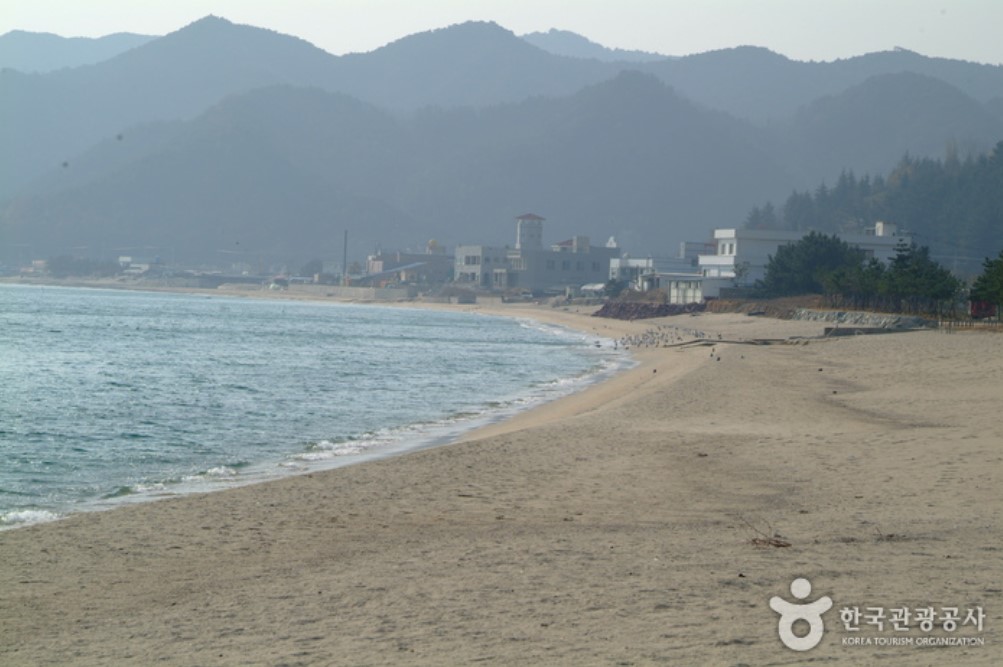
Bongnaepokpo Falls [National Geopark]
Location : Dodong-ri, Ulleung-gun, Gyeongsangbuk-do
How to get there :
From Daegu : 5h 51min by public transports
From Seoul : 6h 20min by public transports
Bongnaepokpo Falls is 30-meter high waterfall with three-tiers formed by differential erosion. The lower two tiers were formed by eroded agglomerate rocks and the highest tier is trachyte. Bongnaepokpo Falls is used as the main source of water supply on Ulleungdo Island.
You can enjoy a walking path that connects Bongnaepokpo Falls’ management office to the waterfall, a natural wind hole that blows out cool air, and a forest retreat to relieve stress. Bangnaepokpo Falls and the surrounding area are not only perfect as a nature attraction, but also highly valued for the rich forest ecosystem and geological features.
![Bongnaepokpo Falls [National Geopark]](https://www.koreaetour.com/wp-content/uploads/2022/04/Bongnaepokpo-Falls-National-Geopark.jpg)
UNESCO Heritage Sites : Gyeongju Areas
Wolji Pond
Location : 102, Wonhwa-ro, Gyeongju-si, Gyeongsangbuk-do
How to get there :
1h 03min from Daegu by car
3h 38min from Seoul by car
Gyeongju Donggung Palace and Wolji Pond was a secondary palace used by the crown prince of the Silla Kingdom. It also served as a banquet site for important national events and important visitors. The pond was created in 674, during the reign of King Munmu. The pond features three small islands, and a landscape of 12 small hills to the northeast.
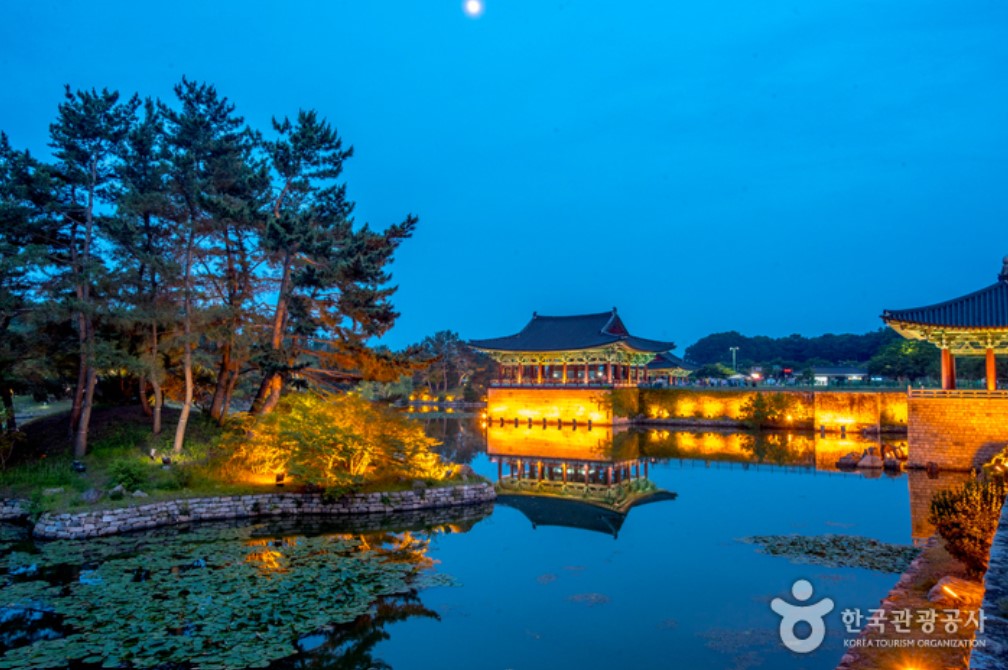
Tumuli Park
Location : 9, Gyerim-ro, Gyeongju-si, Gyeongsangbuk-do
How to get there :
1h 05min from Daegu by car
3h 39min from Seoul by car
Within Daereungwon Tomb Complex is Cheonmachong Tomb (Ancient Tomb No. 155), which was excavated in 1973. Cheonmachong Tomb consists of a wooden coffin placed inside an underground chamber mounded with boulders and earth, characterized as a typical upper class tomb of the Silla period. The mound has a height of 12.7 m with a diameter of 50 m, and consists of a layer of rocks collected from streams.
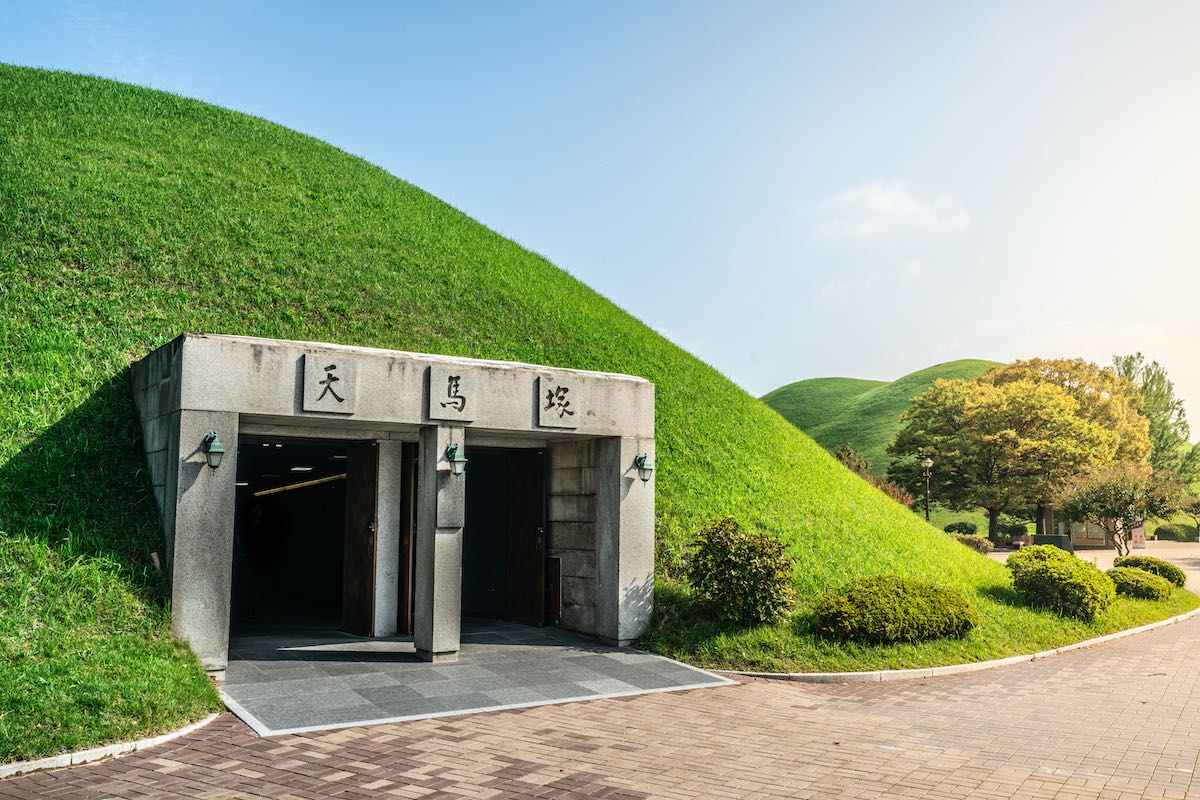
Breathtaking places
Woryeonggyo Bridge
Location : Sanga-dong, Andong-si, Gyeongsangbuk-do
How to get there :
From Daegu : 2h 03min by car
3h 10min by public transports
From Busan : 3h 11min by car
From Seoul : 2h 05min by car
3h 19min by public transports
Woryeonggyo Bridge was named in reference to the submerged Woryeongdae Observatory and the names of nearby areas Wolgok-myeon and Eumdamgol.
The view of Woryeonggyo Bridge with the moon’s reflection in the Nakdonggang River is a beautiful sight. Woryeonggyo Bridge harbors a tragic yet beautiful legend about a wife who made a pair of mituri (hemp shoes) out of her hair in heartfelt yearning and condolence for her late husband. In commemoration of her pure and noble love, the bridge was designed in the style of mituri.
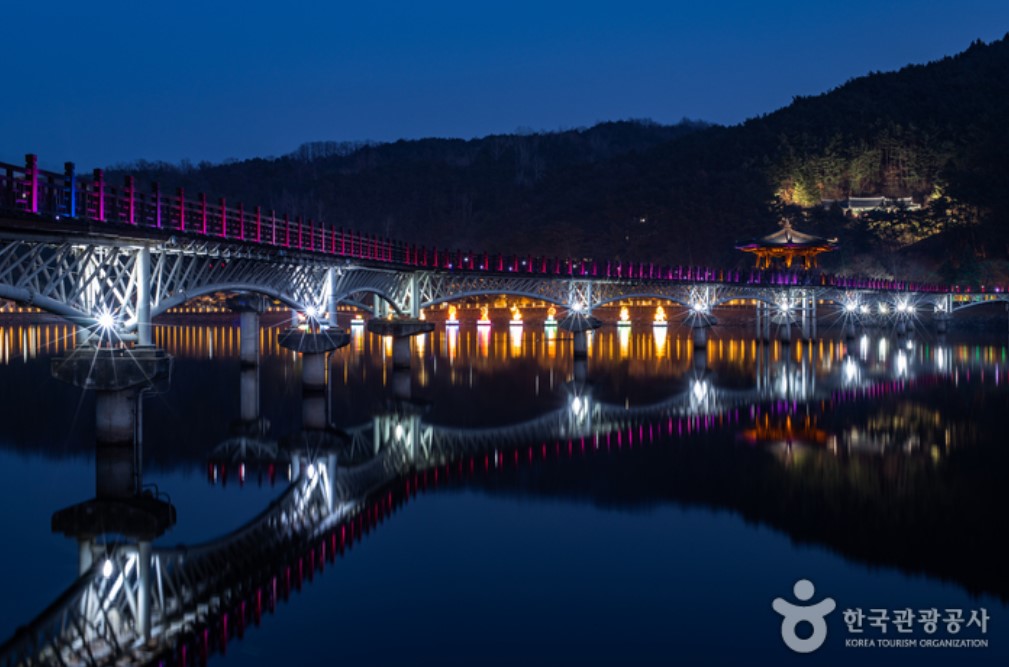
Space Walk
Location : 30, Hwanhogongwon-gil, Buk-gu, Pohang-si, Gyeongsangbuk-do
How to get there :
From Daegu : 2h 02min by car
3h 10min by bus
From Busan : 3h 13min by car
From Seoul : 2h 04min by car
3h 19min by public transports
Space Walk is a trekking trail 333 meters high with 717 steps in total. Curved steel frame with bright lightings portray the symbol of Pohang “the city of steel and light”.
Visitors can enjoy a 360 degree panoramic view of the city and factories, as well as enjoy amazing sunsets and sunrises.
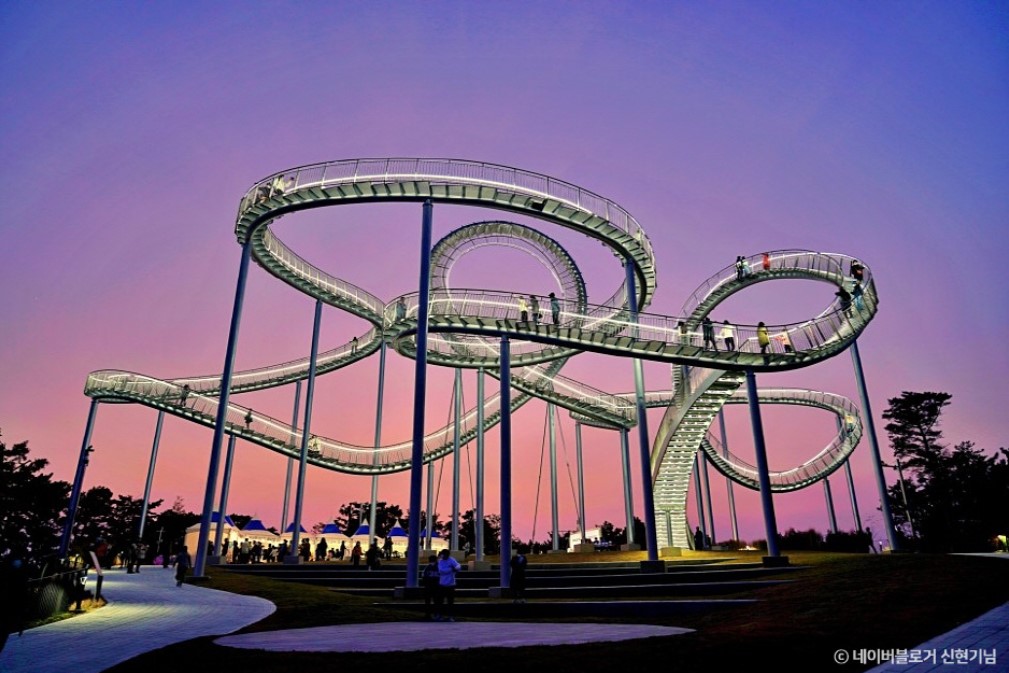
Gyeongbuk province special dishes
Andong Jjimdak
Andong jjimdak is a variety of steamed chicken originating from Andong city in North Gyeongsang province. It is prepared by cooking meat over high heat and adding vegetables such as diced carrots, shiitake mushrooms, potatoes, and scallions marinated in soy sauce and mul-yeot (which is a kind of a syrup) together with cellophane noodles. The result is a sweet, salty, savory dish that goes perfectly with rice.
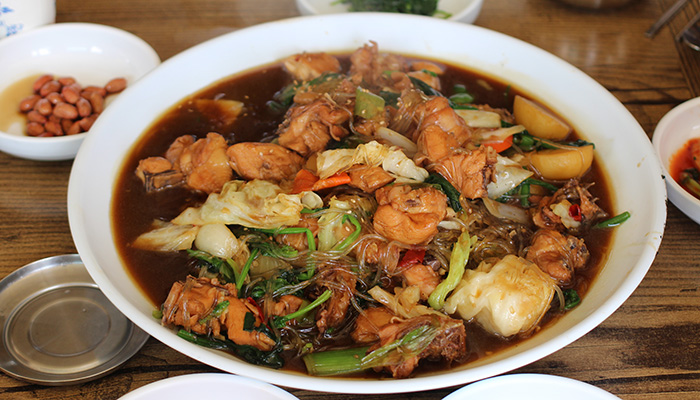
Source : Wikipedia
Kalguksu
Originally from the Andong region of the North Gyeongsang Province, Kal-guksu, which literally means ‘knife-cut noodles’, are traditional, handmade, wheat flour noodles. Instead of traditionally spinning noodles, these noodles are rolled out thinly and cut using a knife, hence their name. Sometimes, soybean powder is mixed into the noodles to give them a softer texture. They are cooked in a delicious broth made with dried anchovies, shellfish and kelp.
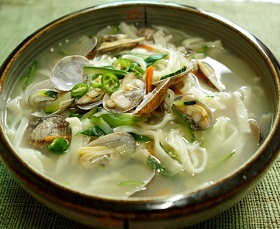
Source : TriFood
Accomodations
Bulguksa Hanok Farm Stay
Bulguksa Hanok Farm Stay is an accommodation that offers many programs located right below Bulguksa Temple in Jinhyeon-dong, Gyeongju-si, Gyeongsangbuk-do. There is a total of four guest rooms. Every guest room has a bathroom and a kitchen inside. You can also cook in the rooms as they are equipped with cooking appliances such as a rice cooker, microwave, and electric stove.
Location : 5-52, Jinti-gil, Gyeongju-si, Gyeongsangbuk-do
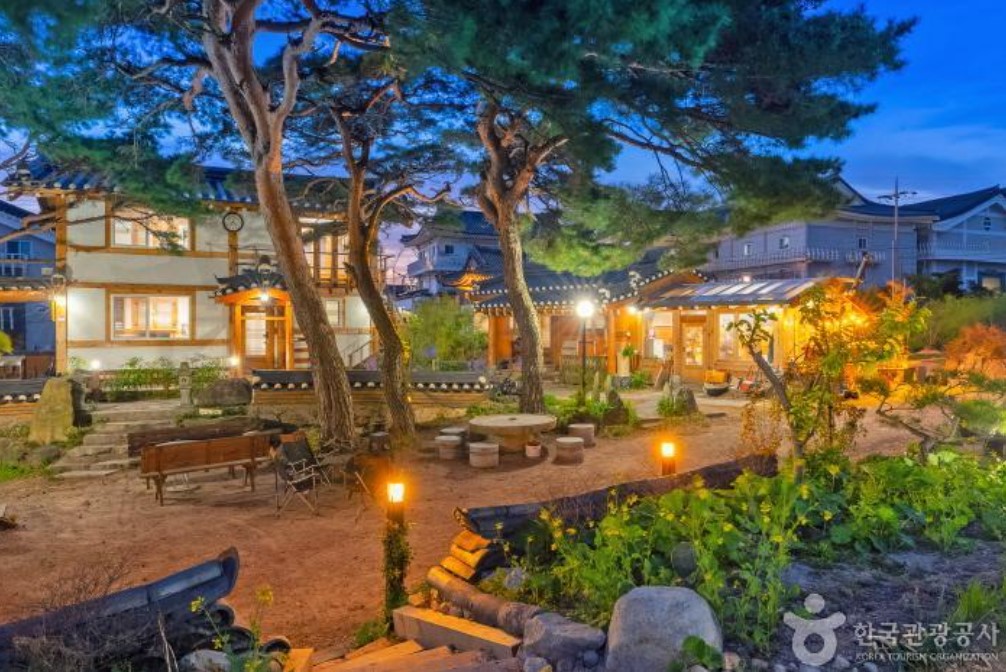
Cheongdo Good Spa Kids Pool Villa
Cheongdo Good Spa Kids Pool Villa is an accommodation that features private indoor playgrounds for children and indoor swimming pools. Each room also has a spacious swimming pool filled with natural spring water. Guests can also enjoy a grill in the private terrace. The self-contained kitchens are fully equipped with kitchen appliances including a refrigerator and a microwave. The pension also offers hotel-quality bedding to make sure the guests rest comfortably. Nearby tourist attractions include Cheongdo Luge, Cheongdo Provence, and Cheongdo Wine Tunnel.
Location : 82-60, Daejeonchiryeopsin-gil, Iseo-myeon, Cheongdo-gun, Gyeongsangbuk-do
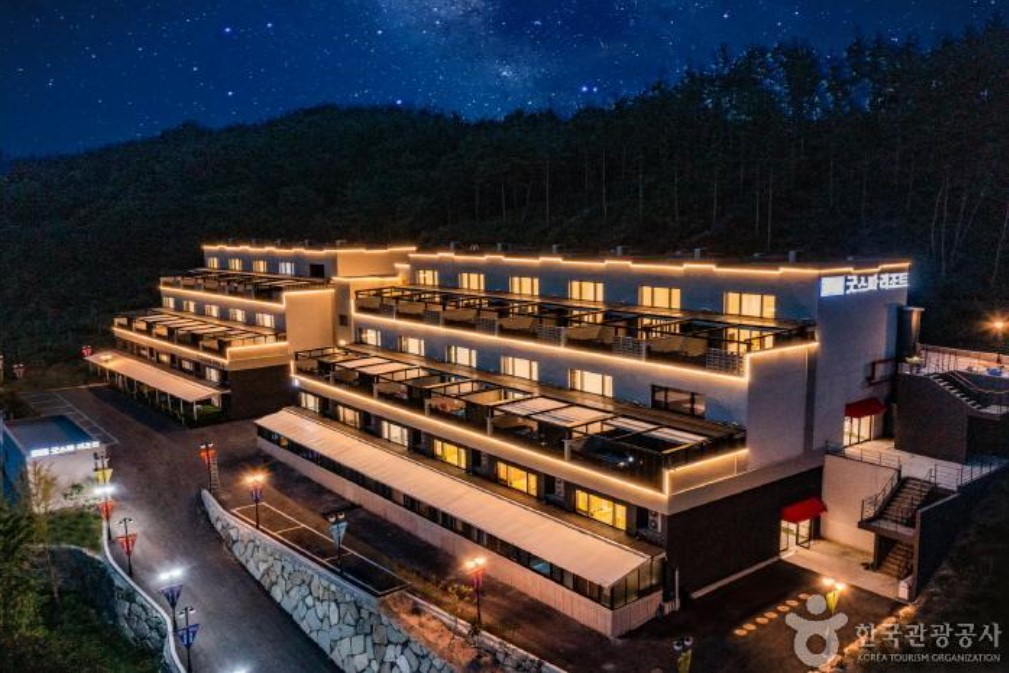
Thanks for reading ! 🙂
Emilie from Etourism,

